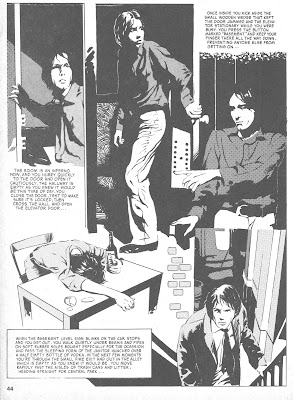Book Review: 'Next, After Lucifer' by Daniel Rhodes
4 / 5 Stars
‘Next, After Lucifer’ (258 pp) was published by Tor Books in July, 1988.
‘Next’ is one of those horror novels in which Ancient Evil arises from a tomb / Native American burial ground / ruined castle / haunted house and wreaks havoc among the unsuspecting citizens of whatever town, or village, or otherwise wretched habitation has the misfortune to lie in close proximity. But it is certainly a cut above the standard-issue novels in this genre.
The story is set in the late 80s in Provence, France. John McTell, an American professor of medieval history, has rented a villa in the countryside not far from the coast of the Mediterranean Sea. Despite the villa’s idyllic character, the restaurants and churches of the charming little village located a short drive away, and the warm Summer air, McTell finds himself inexplicably drawn to the unsettling ruins of the nearby medieval fortress of Montservrain.
McTell learns from the village priest that in the early 13th century, Montservrain was a fortress held by a group of Knights Templars, led by a one-eyed giant named Guilhem de Courdeval. De Courdeval, according to local legend, was a figure of immense evil, given to offering blood sacrifices to demons in exchange for arcane knowledge. Only after the peasant population of the area surrounding the fortress was depleted from de Courdeval’s machinations did the Church dispatch a contingent of Inquisitors to overwhelm the castle, and burn de Courdeval at the stake.
McTell explores the ruins of Montservrain and finds – or perhaps is led to find ? - a long-buried artifact that likely belonged to de Courdeval. Soon McTell’s studies of the artifact become more than scholarly in nature, as evil influences start to take hold not just of him, but of the village………
‘Next, After Lucifer’ benefits first and foremost from author Rhodes’s writing, which flows smoothly and is devoid of the contrivances and artifice that tend to blight many horror novels of the 80s. For example, 'Next' has its obligatory hallucination / nightmare sequences, but these are restrained and do not overwhelm the narrative.
The cast of characters and locales are small and circumscribed, but Rhodes keeps his plot from becoming tedious by adroitly shifting the narrative from one incident to another; he also offers some blackly humorous insights into village life, and the perils of having relatives with too much money and time on their hands come to visit your summer villa.
The ‘evil spirit’ aspect of the novel avoids being trite by virtue of representing all manner of medieval atrocities, these being depicted with sufficient gruesomeness to make the reader wince.
The verdict ? ‘Next, After Lucifer’ is an effective novel of the occult. I would have given it five stars but for the ending, which pulls its punches in order to set up a sequel (‘Adversary’, 1988). But this is a solid four star read, and well worth picking up.



















































































